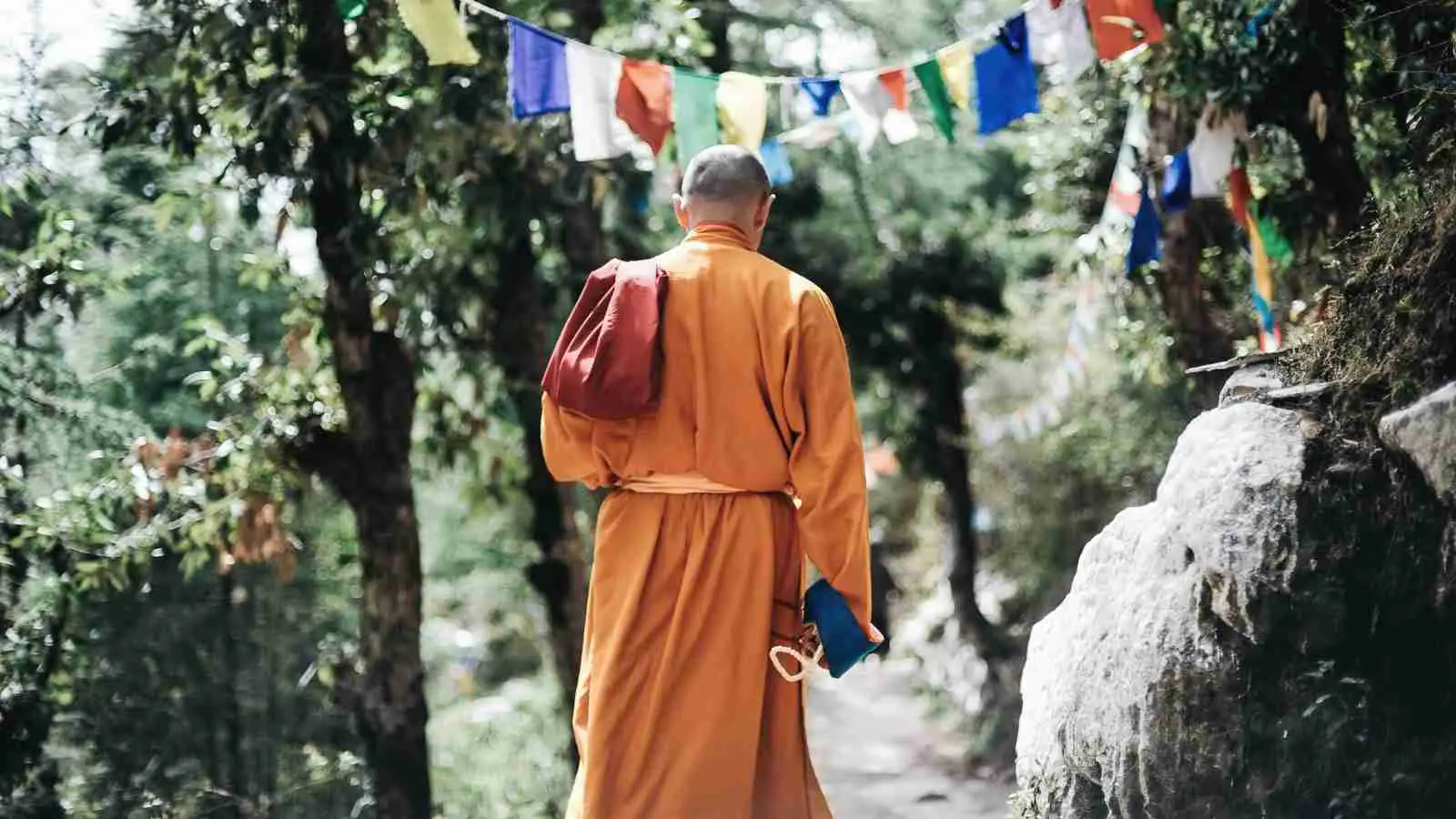When you think of Buddhism, you might envision monks in orange cloaks meditating and chanting in the early hours of the morning. Living in Thailand, this is a common sight for me, leading to a natural association between Meditation and Buddhism.
However, when I started to delve into the teachings of Buddhism, I realized there is much more to being a Buddhist than chanting and meditating every morning. Of course, meditation is an essential component, but it is just the tip of the iceberg when it comes to being a Buddhist.
Being a Buddhist is more about if you follow and live according to the values taught in the spiritual practice rather than how long or how regularly you meditate. So in that sense, you can practice Buddhism without Meditation.
This is not to say that meditation does not have a place in Buddhism. In fact, some Buddhists believe that you cannot reach enlightenment without it. To help you understand more, I will share the central teachings of Buddhism, the role meditation plays, and whether Buddhism is a religion or not.
What are the primary teachings of Buddhism?
Buddhist teachings, known as “dharmas” are centered around the virtues of wisdom, kindness, patience, generosity, and compassion. A large part of Buddhist teaching is about suffering, which is what The Four Noble Truths teach about:
- The Noble Truth of Suffering refers to how every being experiences suffering throughout their life, from birth to illness to aging to death. However, Buddha also explains that human beings inflict more suffering on themselves than necessary.
- The Noble Truth of the Origin of Suffering teaches that the suffering we inflict on ourselves comes from our craving, desire, and lust for sensual pleasures. When we cannot have what we want, we suffer, and when we have to separate from something pleasurable, we suffer.
- The Noble Truth of Cessation of Suffering explains that when our cravings fade, so does our suffering. It teaches us that letting go of our attachment will lead to freedom, which is why monks give up all their possessions.
- The Noble Truth of the Way Leading to the Cessation of Suffering refers to another crucial Buddhist teaching, the Noble Eightfold Path. These are guidelines on how to break free from suffering and experience inner harmony. Buddhists follow the values of the Noble Eightfold Path like yogis follow the Yamas and Niyamas.
The Noble Eightfold Path consists of (1) right view, (2) right intention, (3) right speech, (4) right action, (5) right livelihood, (6) right effort, (7) right mindfulness, (8) right concentration.
Essentially, the journey of a Buddhist practitioner starts with the correct view, as they begin to understand The Four Noble Truths related to suffering. This naturally leads to the right intention, as they change their thinking. This leads to changing their words, actions, and livelihood to ensure they do not create suffering for themselves or others.
Then, the last three dharmas are practiced through meditation, helping the practitioner move closer to liberation from suffering.
What is the purpose of Meditation in Buddhism?
Meditation serves the same purpose in Buddhism as any other spiritual practice: to calm and quiet the mind, increase concentration, and raise consciousness. In addition, it is used as a tool for self-reflection, helping the practitioner connect to their authentic inner self and detach from the ego.
As one of the central teachings of Buddhism is resisting desires and temptations to dissolve suffering, meditation can be a helpful tool to control the mind. In addition, a regular meditation practice can increase concentration and mindfulness (two teachings in The Noble Eightfold Path).
Monks seeking spiritual enlightenment have a more regular and disciplined practice than everyday Buddhists. For example, Buddha awakened during meditation practice, so monks spend hours in deep meditation each morning, intending to reach enlightenment, too.
However, everyday people who try to live according to Buddhist values without expectation do not have the time to meditate for hours each day. Therefore, each Buddist will determine their meditation practice, fitting it in around their work and commitments, just like meditators in the western world do.
What style of Meditation do Buddhists practice?
Because meditation has origins in various spiritual practices and religions, there is a wide range of styles you can learn.
Buddhist meditation is a form of mindfulness meditation known as Anapanasati, which translates to “mindfulness of breath.” This meditation system, which is similar to Vipassana, was taught by Buddha and is said to bring the practitioner a serene and concentrated mind. It involves focusing on the sensation of your breath and observing then releasing any thoughts that come up.
Walking meditation is also popular in several forms of Buddhism. Buddhists may alternate periods of walking meditation with sitting meditation, for example, one-hour sitting, one-hour walking, etc. Like sitting meditation, Buddhists perform walking meditation mindfully, maintaining their awareness of the sensation of their feet touching the ground with each step.
Why is meditation not important in Buddhism?
Although monks may see meditation as the path to enlightenment, the practice of sitting still is not a central part of Buddhism. You do not need to meditate to understand The Four Noble Truths and a large amount of The Noble Eightfold Path.
Incorporating daily meditation could help to accelerate your understanding of the dharmas. However, it’s also possible for someone who claims to be a Buddhist to meditate every day but not follow The Noble Eightfold Path.
As with all spiritual practices, following the ethics and values of that practice is the most essential. Let’s take, for example, the Eight Limbs of Yoga. Asana (yoga postures) is one of the eight limbs, but if you practice asana every day yet do not follow the first two limbs (Yamas and Niyamas), you cannot say you are practicing yoga authenticity. The same is true with meditation and Buddhism.
Is Buddhism a religion?
There is much debate about whether Buddhism is a religion, with some people firmly believing it is and others seeing it as a philosophy or spiritual practice.
I do not see Buddhism as a religion because Buddha was not a god, prophet, or supernatural being. Instead, he was born, lived, and died as a human being and attained his enlightenment through meditation.
Moreover, Buddha did not teach that a god created the universe. He even told his followers to test his teachings before accepting them as fact.
However, some people see Buddhism as a non-theistic religion (where there is no belief in a creator or god). This may be because, like all religions, Buddhism presents a path towards experiencing ultimate reality and the potential for personal transformation.
Final Thoughts
Whether you see Buddhism as a religion or a philosophy is up to you, just as whether you choose to meditate as part of Buddhism practice or not. Everyone’s spiritual journey is unique and personal to them, and as the Buddha advised, test his teachings for yourself and then decide.








